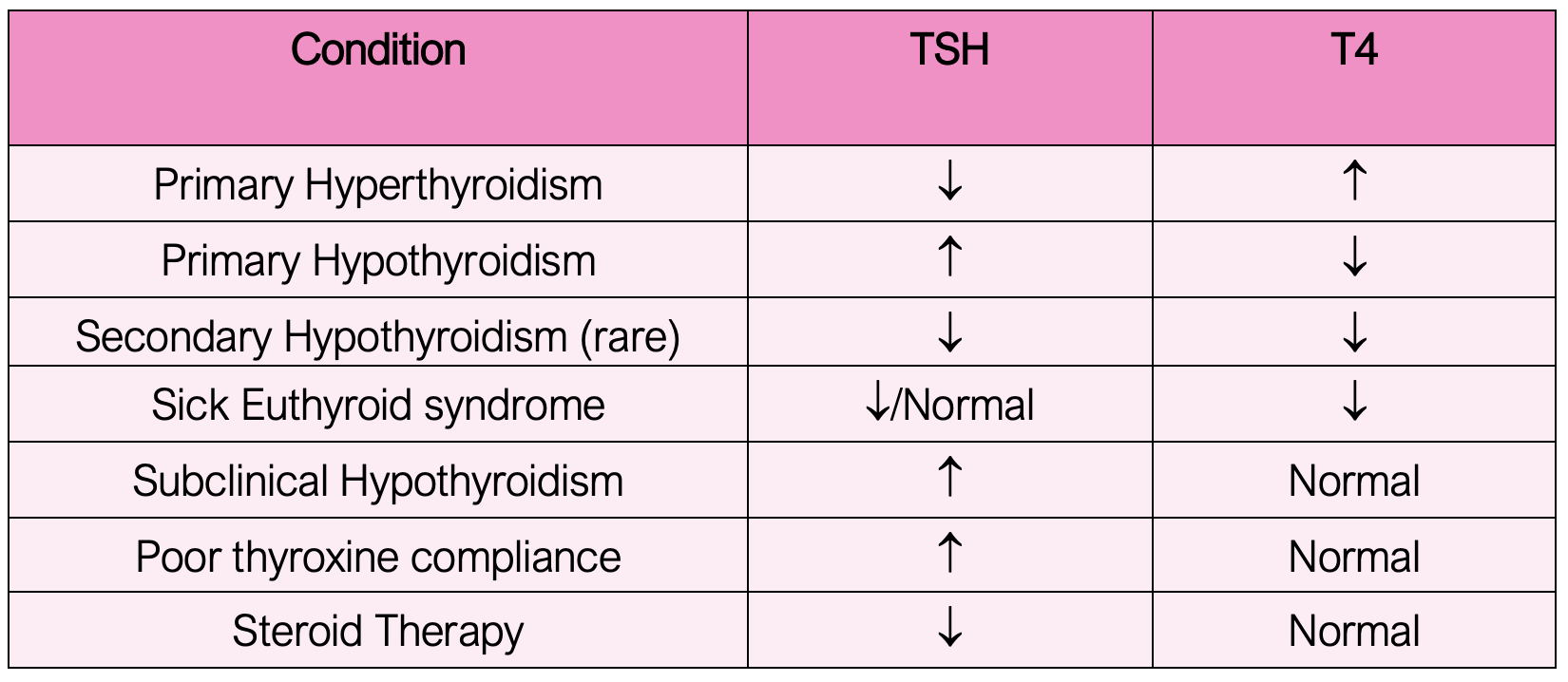HbA1c and TFTs
HbA1c
This is a measure of the glycosylated haemoglobin in the bloodstream.
HbA1c is proportional to the glucose concentration in the blood.
It is used to measure the three-month average blood sugar level.
It is used to measure glycaemic control in those with DM every 3–6 months until stable then every 6 months to a year.
Factors affecting HbA1c
The level of HbA1c is dependent on blood glucose but also affected by RBC lifespan.
Conditions which increase RBC life span give a lower-than-expected HbA1c, e.g., haemolytic anaemias.
Conditions which decrease the RBC life span give a higher-than-expected HbA1c, e.g., megaloblastic anaemia, iron deficiency anaemia, or splenectomy.
You may also get a raised HbA1c from people taking medication that causes hyperglycaemia e.g., steroids.
Thyroid Function Tests
These principally measure free T4 and T3 as well as TSH.
Due to the negative feedback loops between the hypothalamus, pituitary gland and thyroid gland, the relative levels of T4 and TSH can help to discern where the pathology lies.
Thyroid function should be checked in people with atrial fibrillation, diabetes, hyperlipidaemia as well as patients on amiodarone/lithium.

If the TFTs show any abnormalities, we can do further tests to identify the cause:
Thyroid antibodies
Antithyroid peroxidase or antithyroglobulin antibodies are seen in autoimmune disease
TSH receptor antibody
This is detected in Graves’ disease
Serum thyroglobulin
This is useful in monitoring treatment of thyroid carcinoma
Ultrasound scan
This is a first line imaging technique used to visualise lumps on the thyroid gland.
It is particularly good at distinguishing cystic from solid nodules.
Isotope scan
This assesses the uptake of a radiolabelled marker in the thyroid gland.
It can be used to detect the cause of hyperthyroidism as well as looking at areas of high metabolic activity, such as hormone producing thyroid nodules and metastases.
Disclaimer




